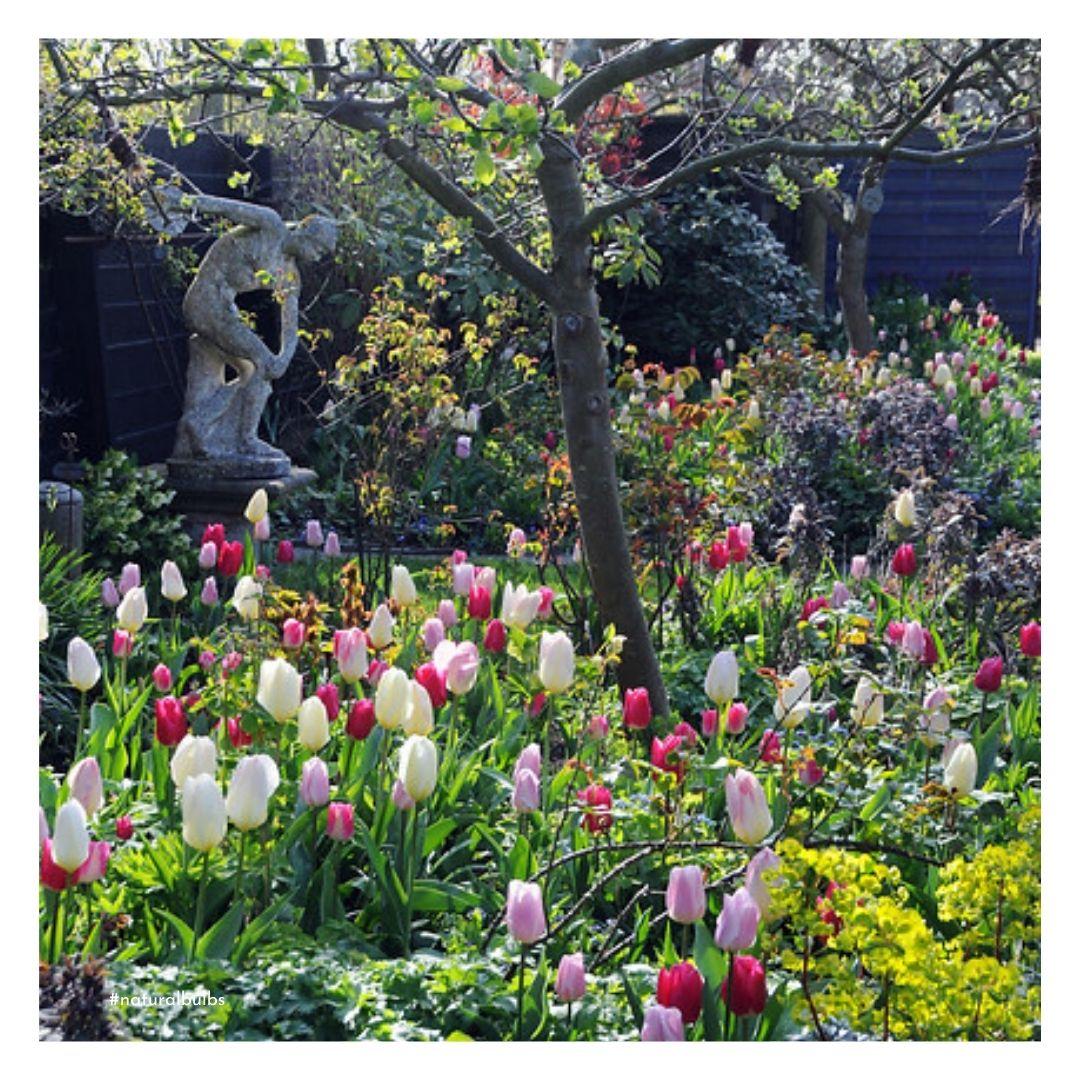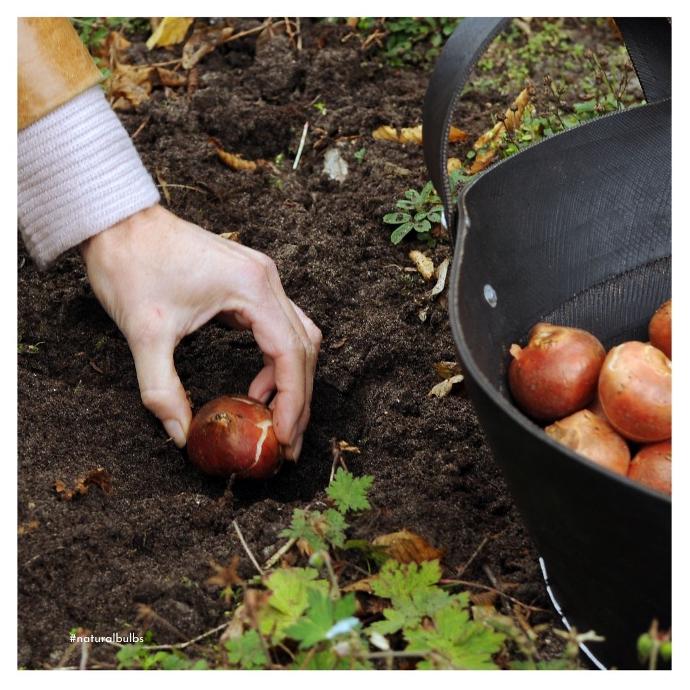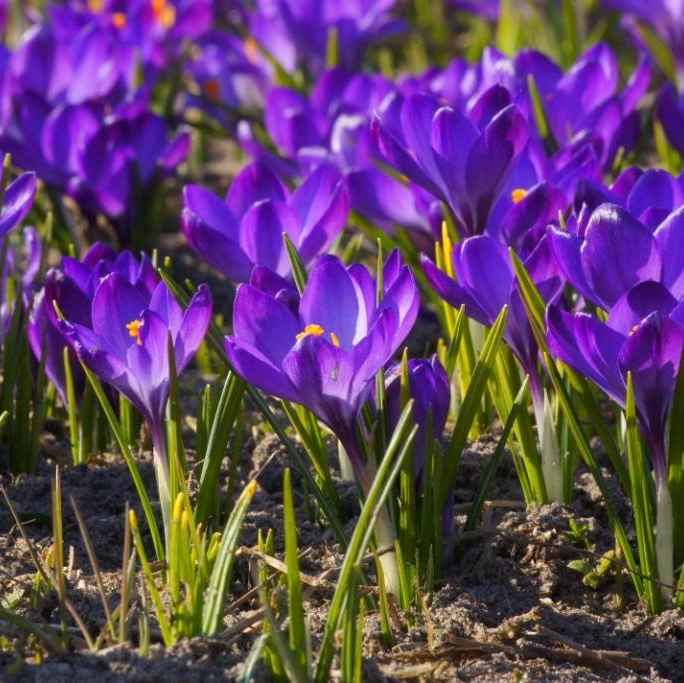The garden changes every year, but many things repeat themselves. We call this a cycle, but how does it actually work, and where do you notice it? These are the phases that recur every year: improving the soil, the flowering period of the bulbs, the effect of sun and shade on the garden, and taking crop rotation into account. You can read a lot more about this below.
What is the cycle of the garden?
The changes in the garden are what makes nature so much fun! Give the garden room to grow and change. Leave some parts of the garden alone and do nothing with them, so that nature can run its course. You will get to see the natural cycle of your garden.
The garden does what it wants and you don't have much control over it. Even though the garden does what it wants, the bulbs come up again around the same time every year. This is a garden cycle. In the spring you see the first green shoots emerge. After this, the first flowers will follow. The flowers produce seeds, the plant or flower dies, and the same thing happens the following year. This is wonderful!
Just letting nature do its job is fantastic, of course, but in some areas you can help a little and give the garden a little extra attention.

What is good soil?
If you want to enjoy your flower bulbs for several years, plant them in nutritious, well-draining, but not too dry soil. If you’ve planted flower bulbs under a tree, keep an eye on the soil. Trees can absorb a lot of water, which can make the soil around them very wet and soggy. It’s good to keep in mind that flower bulbs don’t like soil that is too wet. This will cause them to get mouldy and they will eventually stop growing.
If you have very moist soil, including clay soil, it’s wise to improve the water balance.
- You can do this by working coarse sand through it so that it loosens up.
- Work compost through the soil. Compost ensures that solid soil, such as loam and clay soil, allows water and air to pass through better. This way, compost provides a good structure to the soil, and at the same time stimulates soillife. And of cours, that's what you want.
If too much water remains in the soil, the roots can rot and the bulb won’t flower. It’s a bit of work to get the soil completely balanced, but if you ensure a better balance, other plants will be able to grow better in the garden.
If you prefer to enjoy different bulbs every year (instead of leaving the current bulbs in the ground) then the bulbs are much less picky in terms of soil type in which they’ll grow well. If you buy a good quality bulb, the bulb itself will have all the nutrition needed to be able to flower beautifully that coming season.

Effect of sun or shade?
For the blooming of many flower bulbs, such as tulips and daffodils, it makes little difference whether they are in the sun or shade. This is ideal if you’re new in your garden and don’t quite know yet how the sun moves around the garden. You’ll notice that the flower bulbs that are in the sun will bloom much earlier, but they also finish flowering faster. If you think about it, this makes a lot of sense.
Some intense colours tend to fade out when exposed to full sun all day, so they may look slightly different from the picture. There are also varieties that become much brighter in colour during the blooming season. So, you see that the sun can have a lot of influence on the way a flower bulbs or plant blooms.
If you want to enjoy your new bulbs again next year without having to plant bulbs every season, then you have to pay attention to the amount of sunlight. That’s why it’s always a good idea to plant them where they are recommended. You’ll find more information about the best location for your type of flower bulb on this website.
After they’ve bloomed, the bulbs need light to build up reserve nutrition for the following year. They do this by absorbing sunlight through the leaves that are still attached. That is why you should not remove the leaves after the plant has finished blooming. If the leaf has faded and becomes dry, you may cut it off, but you don't have to.
Spreading the blooming period
The earlier flower bulbs start to bloom, the earlier they’ll finish for the season. Think of the snowdrop, crocus or the botanical tulips. You can easily place these bulbs under a tree because the trees won’t have any leaves on them yet this early in the spring. Or plant them in places where the perennials emerge in mid-May. This way, you’ll have less fallow land and you use the soil (and the garden) optimally in terms of space.

Provide a variety of bulbs
You may have heard about this, but you might not be fully familiar with it yet: crop rotation. If you keep the same types of bulbs in one place for several years in a row, you may risk the soil developing certain diseases. Once a disease has set in, it can be very hard to get rid of. Maybe you find this scary and you’re starting to doubt if you can make it work. Don't worry, because nothing can actually go wrong if you don't put your plants in exactly the same place. If you take the flower bulb out of the ground after it has finished blooming, leave a small label stick in its place to remind you what was there.
Conclusion: Provide variety. So, place daffodils where tulips were, and vice versa. This prevents fungal and other soil diseases.
Cover and improve soil
Make sure you cover the bare patches of soil in the garden in between the blooming peiods of the flower bulbs. You can find more about this in the blog about improving the soil. The advantage of covering the soil is that the soil life is more active and this directly contributes to a lighter soil in which the flower bulbs will grow and bloom better.
And it is even safer if you regularly apply good, preferably organic, compost to your garden. This improves the health and resistance of your soil.